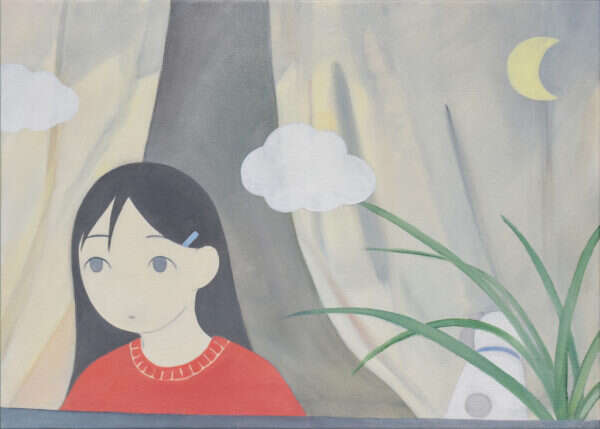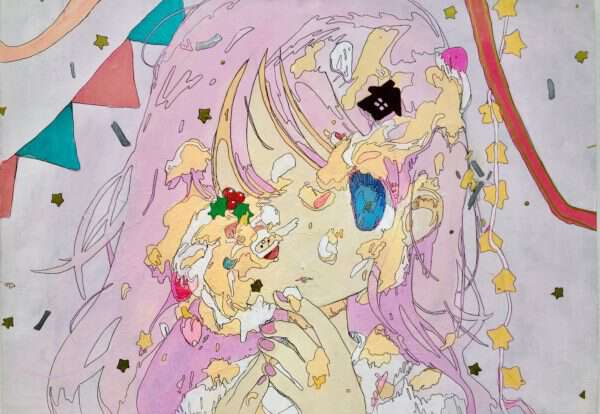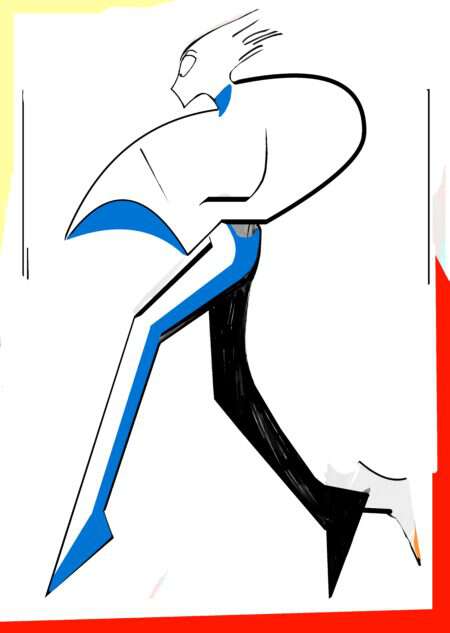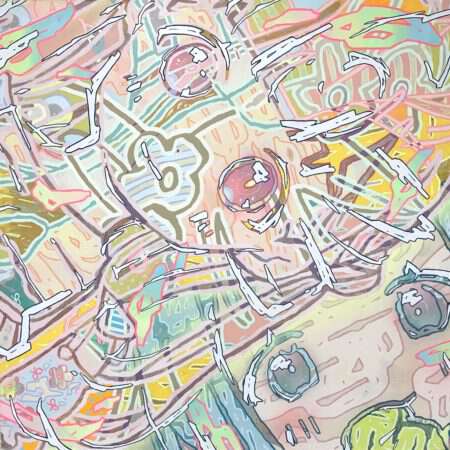
NEWS
Redraw the horizon.
Instagram에서 TRiCERA를 팔로우하고 크리에이티브 아티스트를 확인하십시오.
5%OFF & 무료배송 1차구매
FIRSTART5
10%OFF 첫 구매 후 두 번째 구매 시!
TRiCERA에 오신 것을 환영합니다
Hi there! 만나뵙게 되어 반갑습니다 🎉
자기소개를 부탁드립니다.
손님
TRiCERA is pleased to announce a group show of multiple works by five artists: Takumi Saito, Samehoshi, Manami Azuma, Kanae Taku Hayashi, and Azusa Nozawa, from December 19 (Sat) to January 19 (Sat), 2021.
About this exhibition
This exhibition, which takes its title from The Shape of Time: Remarks of the History of Things by art historian George Kübler (1912-96), focuses on time as it relates to the things of art while unraveling the works and activities of the participating artists. In addition, printing, one of the two-dimensional mediums, will be employed as a proposal for viewing experience.
Painting and printmaking often have an ironic relationship in various fields of art. On the one hand, painting is a material with complex information and structure through materials such as painting materials and the physical traces of the artist such as strokes and brush strokes, while on the other hand, printmaking functions like a record that extracts the image and fixes it on the paper.
Paintings are naturally scratched and worn down over time, slowly wearing away like melting ice. This fact reminds us that painting is a flat object, and at the same time, it brings a new perspective of appreciation of painting as a material, while prints are a medium more faithful to the recording and transmission of images, apart from the materiality and physicality of the work, and each has a different way of time flow.
In addition to referring to the time associated with art works, this exhibition will attempt to interpret the current state of expressiveness of the participating artists by unraveling their expressions from the angle of time.
Takumi Saito depicts his childhood self in a landscape that reminds him of emotions that are fading as he grows older. In her works, which depict the two tenses of present and past on a single screen, the irreversible progression of time and the sentimentality associated with it are richly and quietly conveyed.
Samihoshi has depicted different vectors of decay and generation on the deformed face of a young girl. The works in this exhibition, in addition to the aforementioned ambivalent character, explore the collapse of plasticity from a new aspect by smashing cakes on the face.
Using figures of beautiful girls and toys as motifs, Azuma has been painting experimental works that confine time to the canvas through the movement of rotation. He continues to use visual language to present his thoughts on sequential time, repetitive time, and objects in motion.
In addition, Kanaewu Lin has been working on the theme of speed in the plane. Although painting is, of course, a static object and motion as a phenomenon does not appear on the screen, she has been addressing the issue of speed on a stationary screen, as if the Futurists had done.
In her paintings, Azusa Nozawa uses sticker bombs, a technique derived from the street culture of customizing cars and motorcycles, in which stickers are applied in layers until the surface of the support is no longer visible. Her paintings, with their layered images, have a multi-layered structure, and the time that they contain is extremely complex, which is what distinguishes them from illustrations and gives them the significance of existing as paintings.
While Kübler has attempted to analyze the style and series flow of the works themselves, this exhibition expands from that and examines the flow of time and the material nature of art works in an ironic way by exhibiting not paintings, which are the result of the act of creation, but printing works, which are the record of that act. The exhibition aims to provide an opportunity to consider the flow of time and the material nature of art works in an ironic way. We hope you will enjoy the opportunity to think about painting itself through the images of artists who quietly tell their stories on paper.
About the participating artists

Takumi Saito
Born in Tokyo in 1996, Saito graduated from Musashino Art University in 2020 with a major in Japanese painting. His major group exhibitions include "daily awa" (Koenji pocke / 2019 / Tokyo), "fog" (exhibition space CLOSET / 2020 / Tokyo), "ob curated exhibition neo wassyoi" (hidari zingaro / 2020 / Tokyo), and his solo exhibitions include "tender age" (Shinjuku Ophthalmology Gallery / 2020 / Tokyo).
Click here to see Takumi Saito's limited prints

SAMEHOSHI
Born in Tokyo in 1997. Since around 2016, she has been drawing a girl who repeatedly collapses and forms with acrylic paint and pen.
Click here for limited edition prints of Samihoshi

Kanae Takeshi Hayashi
Born in Nagano, Japan, he has been working on the theme of speed in two-dimensional expression since 2011. In 2015, he announced his declaration of speedism. His major solo exhibitions include "Big Tree and Giant Woodpecker" (Clear Edition & Gallery/2015) and "God of Speed" (WISH LESS gallery/2019).
Click here to see limited edition prints by Kanae Wu Lin

Manami Higashi
Born in Yokohama City, Kanagawa Prefecture in 1988, Higashi received her MFA from Joshibi University of Art and Design in 2013. She was awarded the Ichiro Fukuzawa Prize in 2013. Major exhibitions include "Meklichkeit 4" at Roentgenwerke (2013), "Future Exhibition" at Nichido Gallery (2016), and "ICON" at MASATAKA CONTEMPORARY (2019). In addition, she has exhibited at many art fairs in New York and Hong Kong.
Click here to see Manami Azuma's limited edition prints

Azusa Nozawa
Born 1994 in Shizuoka, Japan. 2019 Graduated from Tokyo University of the Arts, Department of Painting, majoring in oil painting. Her major solo exhibitions include "× to Ч no Haku Chumu" (hidarizingaro/2018/Tokyo) and "Furete Hotobori" (Medel Gallery Shu/2020/Tokyo). Her major group exhibitions include "HERBEST Exhibition" (hidarizingaro/2011/Tokyo) and "Polinomial" ( Shinjuku Ophthalmology Gallery/2012/Tokyo), "ART KYOTO 2012" (Hotel Montery Kyoto/2012/Kyoto), "Manaka Guradeshon" (Shinjuku Ophthalmology Gallery/2017/Tokyo), "199X6" (shuuue/2017-2020/Tokyo), "ART TAIPEI 2020" (Taipei, 2020)
Click here to see Azusa Nozawa's limited edition prints
Notes on the sale]
(1) The work will be signed/numbered/original frame.
(2) Edition number cannot be selected.
(3) Please allow two weeks to one month from the end of the exhibition period for the artwork to be shipped.
(4) The customer will be responsible for any charges required for re-delivery due to refusal of receipt.
작가
Shinzo Okuoka
TRiCERA is pleased to announce a group show of multiple works by five artists: Takumi Saito, Samehoshi, Manami Azuma, Kanae Taku Hayashi, and Azusa Nozawa, from December 19 (Sat) to January 19 (Sat), 2021.
About this exhibition
This exhibition, which takes its title from The Shape of Time: Remarks of the History of Things by art historian George Kübler (1912-96), focuses on time as it relates to the things of art while unraveling the works and activities of the participating artists. In addition, printing, one of the two-dimensional mediums, will be employed as a proposal for viewing experience.
Painting and printmaking often have an ironic relationship in various fields of art. On the one hand, painting is a material with complex information and structure through materials such as painting materials and the physical traces of the artist such as strokes and brush strokes, while on the other hand, printmaking functions like a record that extracts the image and fixes it on the paper.
Paintings are naturally scratched and worn down over time, slowly wearing away like melting ice. This fact reminds us that painting is a flat object, and at the same time, it brings a new perspective of appreciation of painting as a material, while prints are a medium more faithful to the recording and transmission of images, apart from the materiality and physicality of the work, and each has a different way of time flow.
In addition to referring to the time associated with art works, this exhibition will attempt to interpret the current state of expressiveness of the participating artists by unraveling their expressions from the angle of time.
Takumi Saito depicts his childhood self in a landscape that reminds him of emotions that are fading as he grows older. In her works, which depict the two tenses of present and past on a single screen, the irreversible progression of time and the sentimentality associated with it are richly and quietly conveyed.
Samihoshi has depicted different vectors of decay and generation on the deformed face of a young girl. The works in this exhibition, in addition to the aforementioned ambivalent character, explore the collapse of plasticity from a new aspect by smashing cakes on the face.
Using figures of beautiful girls and toys as motifs, Azuma has been painting experimental works that confine time to the canvas through the movement of rotation. He continues to use visual language to present his thoughts on sequential time, repetitive time, and objects in motion.
In addition, Kanaewu Lin has been working on the theme of speed in the plane. Although painting is, of course, a static object and motion as a phenomenon does not appear on the screen, she has been addressing the issue of speed on a stationary screen, as if the Futurists had done.
In her paintings, Azusa Nozawa uses sticker bombs, a technique derived from the street culture of customizing cars and motorcycles, in which stickers are applied in layers until the surface of the support is no longer visible. Her paintings, with their layered images, have a multi-layered structure, and the time that they contain is extremely complex, which is what distinguishes them from illustrations and gives them the significance of existing as paintings.
While Kübler has attempted to analyze the style and series flow of the works themselves, this exhibition expands from that and examines the flow of time and the material nature of art works in an ironic way by exhibiting not paintings, which are the result of the act of creation, but printing works, which are the record of that act. The exhibition aims to provide an opportunity to consider the flow of time and the material nature of art works in an ironic way. We hope you will enjoy the opportunity to think about painting itself through the images of artists who quietly tell their stories on paper.
About the participating artists

Takumi Saito
Born in Tokyo in 1996, Saito graduated from Musashino Art University in 2020 with a major in Japanese painting. His major group exhibitions include "daily awa" (Koenji pocke / 2019 / Tokyo), "fog" (exhibition space CLOSET / 2020 / Tokyo), "ob curated exhibition neo wassyoi" (hidari zingaro / 2020 / Tokyo), and his solo exhibitions include "tender age" (Shinjuku Ophthalmology Gallery / 2020 / Tokyo).
Click here to see Takumi Saito's limited prints

SAMEHOSHI
Born in Tokyo in 1997. Since around 2016, she has been drawing a girl who repeatedly collapses and forms with acrylic paint and pen.
Click here for limited edition prints of Samihoshi

Kanae Takeshi Hayashi
Born in Nagano, Japan, he has been working on the theme of speed in two-dimensional expression since 2011. In 2015, he announced his declaration of speedism. His major solo exhibitions include "Big Tree and Giant Woodpecker" (Clear Edition & Gallery/2015) and "God of Speed" (WISH LESS gallery/2019).
Click here to see limited edition prints by Kanae Wu Lin

Manami Higashi
Born in Yokohama City, Kanagawa Prefecture in 1988, Higashi received her MFA from Joshibi University of Art and Design in 2013. She was awarded the Ichiro Fukuzawa Prize in 2013. Major exhibitions include "Meklichkeit 4" at Roentgenwerke (2013), "Future Exhibition" at Nichido Gallery (2016), and "ICON" at MASATAKA CONTEMPORARY (2019). In addition, she has exhibited at many art fairs in New York and Hong Kong.
Click here to see Manami Azuma's limited edition prints

Azusa Nozawa
Born 1994 in Shizuoka, Japan. 2019 Graduated from Tokyo University of the Arts, Department of Painting, majoring in oil painting. Her major solo exhibitions include "× to Ч no Haku Chumu" (hidarizingaro/2018/Tokyo) and "Furete Hotobori" (Medel Gallery Shu/2020/Tokyo). Her major group exhibitions include "HERBEST Exhibition" (hidarizingaro/2011/Tokyo) and "Polinomial" ( Shinjuku Ophthalmology Gallery/2012/Tokyo), "ART KYOTO 2012" (Hotel Montery Kyoto/2012/Kyoto), "Manaka Guradeshon" (Shinjuku Ophthalmology Gallery/2017/Tokyo), "199X6" (shuuue/2017-2020/Tokyo), "ART TAIPEI 2020" (Taipei, 2020)
Click here to see Azusa Nozawa's limited edition prints
Notes on the sale]
(1) The work will be signed/numbered/original frame.
(2) Edition number cannot be selected.
(3) Please allow two weeks to one month from the end of the exhibition period for the artwork to be shipped.
(4) The customer will be responsible for any charges required for re-delivery due to refusal of receipt.
작가
Shinzo Okuoka